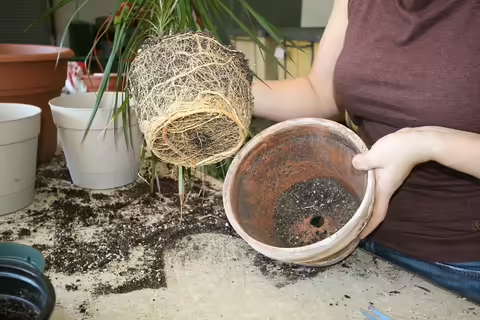URBANA, Ill. – Keeping houseplants is a source of satisfaction for many; yet, when plants are not thriving, it can be concerning and confusing.
“As soon as a leaf yellows, or develops a brown spot, many run for a remedy,” says University of Illinois Extension horticulture educator Sarah Vogel. “They may reach for fertilizer, or household pesticides, neither of which is an appropriate first response.”
Yellowing, brown edges, leaf spots, or drops are all symptoms something is ailing a plant, and cultural or environmental conditions are often the culprit. Knowing what to look for can alleviate houseplant woes.
All species of plants have specific light, water, and soil condition needs. This houseplant care guide from University of Missouri Extension, available at go.illinois.edu/CaringForHouseplants, outlines the basics of each.
“Many plants go through an adjustment period whenever they are moved,” Vogel says. “This can happen whether it’s from the nursery to a home, the living room to a porch, or one window to another.”
This may cause yellowing, or leaf drop, but the plant will eventually acclimate if in favorable conditions. If the yellowing continues longer than a few weeks, place the plant in another spot and change its watering schedule slightly.
Yellow leaves can also mean the plant is overwatered. A great way to decipher watering issues is to carefully remove the plant from its container and look at the roots.
“With some exceptions, healthy plants generally have white roots,” Vogel says. “If the roots are rusty orange to light brown, it is underwatered, and if the roots are dark brown to black, it is overwatered.”
Gently place the plant back in the container and adjust the watering schedule accordingly. If overwatering is the issue, withhold water until the soil is quite dry and gradually begin a new watering schedule. After two weeks, apply a water-soluble, houseplant-specific fertilizer. If no improvement is seen in the next two weeks, repot in fresh soil.
Yellowing may also occur if a plant needs fertilized. Depending on what nutrient is needed, yellowing may begin on the outer edges of leaves, or from the vein outward, or the leaf may even curl. Become familiar with the fertilization needs of each species. Occasionally, a plant needs fertilization when it becomes root-bound and may simply need to be repotted into a larger container.
Leaf spots on foliage can be caused by too much sun. When spots appear consistently, move the plant to a place it receives less sun.
“Leggy, or stretching plants occur when they are reaching for more light,” Vogel says. “Move them to a brighter location, or turn them occasionally to keep them growing evenly.”
Some fungal diseases may also cause leaf spots, so ensure proper circulation, remove and destroy infected plant parts, and allow soil to dry between waterings.
Brown-edged leaves may indicate an erratic watering schedule or exposure to cold drafts. Another cause of brown leaf edges is an accumulation of fertilizer salts on containers. If other issues have been eliminated and the brown edges continue, scrub the edges of the pot and flush the soil with clear water.
Most common insect pests on houseplants include scale, fungus gnats, aphids, spider mites, and mealybugs. If the plant is heavily infested with scale, it is best to discard it. Fungus gnats can be greatly reduced by letting the plant dry completely between waterings. Aphids can be controlled by washing away with water, or using insecticidal soap. Spider mites often affect already stressed plants, so keeping plants healthy is the most effective control measure. Horticultural oil, or insecticidal soap may be used for spider mite infestations. Mealybugs can be wiped away with a cotton swab soaked in rubbing alcohol.
When using pesticides, make sure they are labeled for indoor use and read and follow all label directions.
If the problems persist, horticulture educators and Master Gardener volunteers are available to provide assistance at Illinois Extension offices around the state. Local offices can be located at go.illinois.edu/ExtensionOffice.
SOURCE: Sarah Vogel, Horticulture Educator, Illinois Extension
ABOUT EXTENSION: Illinois Extension leads public outreach for University of Illinois by translating research into action plans that allow Illinois families, businesses, and community leaders to solve problems, make informed decisions, and adapt to changes and opportunities.
PHOTO ACCESS: The photo in this article is available to download for media use.
